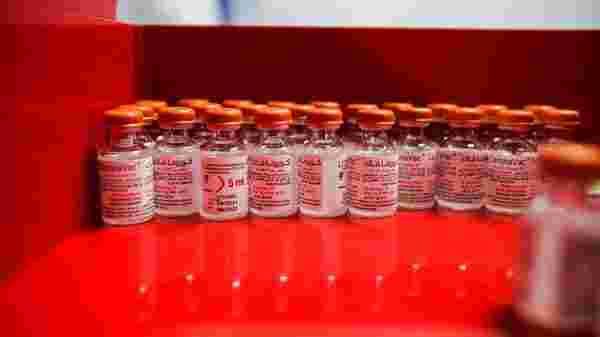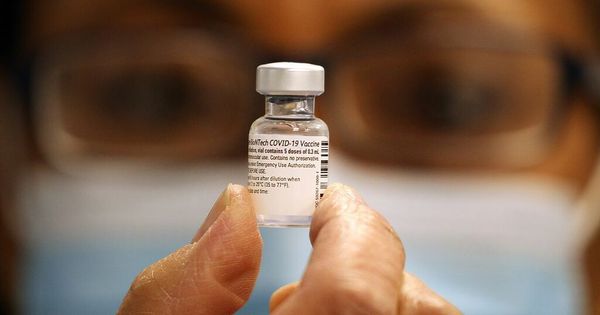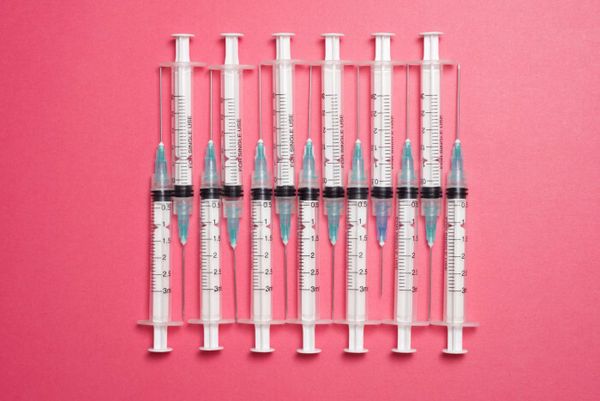
Australia has yet another tool in its immunisation arsenal after the Novavax COVID-19 vaccine was approved by the national regulator on Monday.
Unlike existing vaccines, the Novavax shot is protein-based and therefore is much easier to store and transport.
“By many, it’s considered a more traditional approach of making vaccines,” said Associate Professor Paul Griffin from the University of Queensland.
Associate Professor Griffin led the Phase 1 clinical trials for the vaccine in Melbourne in May 2020, not long after the start of the pandemic.
The much-hyped vaccine was beaten to the market by the likes of Pfizer, AstraZeneca, and dozens of others, but it’s now poised to play a big role around the world.
Developed in the US, the Novavax shot has now been approved for use in the EU, South Korea, India, the Philippines and Indonesia.
“It’s another big step forward in our battle with this virus,” Associate Professor Griffin told The New Daily.
The first doses will be administered to the public from February 21.
What’s different about Novavax?
The Novavax COVID-19 vaccine is the first protein-based COVID vaccine to be approved in Australia.
Pfizer and Moderna developed mRNA vaccines against COVID-19, while the AstraZeneca shot is a viral vector vaccine.
Both of these other technologies are relatively new on the market.
All four vaccines – Novavax included – expose the body to the spike proteins on the surface of the virus in order to teach our immune system how to react.
“The way the mRNA vaccines [like Pfizer or Moderna] do that is to inject the instructions to make spike proteins, so they do that in our own cells after that’s been administered,” Associate Professor Griffin said.
“With the viral vector vaccine, AstraZeneca, we put those same instructions in a harmless virus to carry that needs to go.
“But with protein-based vaccines [such as Novavax], we make those proteins in the laboratory and then just inject those straight in.”
Protein-based vaccines have been around for decades.
If you’ve been immunised against Hepatitis B or HPV, chances are you’ve already had a protein-based vaccine.
What’s good about it?
One of the biggest benefits of the Novavax protein-based COVID-19 vaccine is that it’s much easier to store and transport compared to other options.
“mRNA is inherently unstable and so that’s what needs those extreme cold supply chains, whereas these protein-based vaccines are much more stable,” Associate Professor Griffin said.
“So at standard refrigeration temperatures for many months, Novavax is quite stable.
“And that will really help us in our country, of course, with our conditions.”

Because it’s so much easier to transport and store, the Novavax vaccine could potentially be administered by an even wider ranger of providers beyond the traditional GP clinics, vaccination hubs and pharmacies, Associate Professor Griffin said.
The Novavax shot might also be more readily produced around the world because it’s based on a more familiar technology.
Australia’s inability to domestically produce mRNA vaccines created a bottleneck in the initial rollout, which was only fixed when the government stuck eleventh-hour deals to buy vaccine shipments from other countries.
Professor Jaya Dantas, a vaccine inequality expert from Curtin University, said protein-based vaccines could help address the gaping holes in the world’s vaccine rollout.
“What is not publicised is that home-grown protein-based vaccines have been produced in Cuba, which has administered the COVID-19 vaccine to its population with strong vaccine uptake,” Professor Dantas added.
“Taiwan has also done the same with its national vaccine, which is protein based.”
What’s the catch?
The Novavax vaccine has only been approved for the first two doses in adults – not the booster shot.
That means the more than 95 per cent of Australian adults who’ve already been vaccinated won’t be able to get the Novavax shot any time soon.
However, it will almost certainly be approved for a booster in the coming months.
In the meantime, the Novavax shot may appeal to some of the stragglers who were anxious about receiving the existing vaccines.
“In the end, one of the main things I’m really excited about is that there were a few people who were hesitant, for whatever reason, to get the other vaccines, but now we have an option for them,” Associate Professor Griffin said.
“We have an option on a different technology and hopefully that means we can get our vaccine right up across the country now.
“Every additional person vaccinated goes a very long way to improving our situation.”










